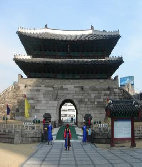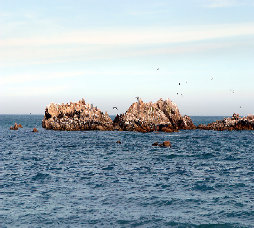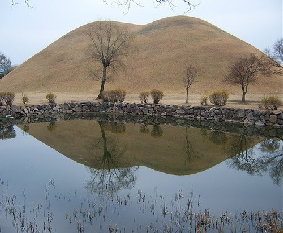Visit Historic Sites To Learn About The Rich Korean History And Culture ...
Major Historic Sites in South Korea are emerging as the hot new destinations on the travel map of the global tourists who prefer to visit off-beat places rather than flocking to the run-of-the-mill places. One such hot spot is the
Cheomseongdae Observatory
which is one of the oldest structure in Korea and literally means "Star Gazing Tower".
 Discover the histric sites and learn the stories behind the history, culture and the people of the land in a more intimate way. The vibrant spirit and strong culture moorings set South Korea apart from its larger neighbors. Discover the academic institution like
Byeongsan Seowon,
a Confucian School established by esteemed confucian scholars to pay tribute to the memory of Seong-Nyong Yu (1542-1607), a much revered author and personality of that time.
Discover the histric sites and learn the stories behind the history, culture and the people of the land in a more intimate way. The vibrant spirit and strong culture moorings set South Korea apart from its larger neighbors. Discover the academic institution like
Byeongsan Seowon,
a Confucian School established by esteemed confucian scholars to pay tribute to the memory of Seong-Nyong Yu (1542-1607), a much revered author and personality of that time.
You certainly cannot go past Andong Incheondong which has now become a famous tourist spot due to the awe-inspiring giant Buddha Statue where the head is 2.43 meter high resting on top of a 9.95 meter high and 7.72 meter wide body.
Separated from Japan by the Sea of japan and from China by the Yellow Sea, this small country of less than 50 million people is making it big when it comes to attracting visitors worldwide to its stunning natural beauty.
Such beauty is found at Dojangpo Maeul Hill which is a quaint little village lying between the Hakdong Pebble Beach and the Hammock Beach with a little heaven of opulence.

The history of Korea stretches from Lower Paleolithic times to the present. The earliest known Korean pottery dates to around 8000 BC and the Neolithic period began before 6000 BC followed by the Bronze Age around 2500 BC.
According to the legend, the first dynasty of Gojoseon or the Old Joseon was established in 2333 BC and it finally expanded from the peninsula to much of Manchuria. By 3rd Century BC, it was in decline and eventually dismantled leaving behind a large number of successor states.
Bosingak Belfry Bell,
the second official treasure of Seoul lives in Jongno and was used during the Joseon Dynasty to tell time.
The Korean kingdoms maintained extreme rivalry with each other both in economical and military fields.
The Goguryeo and Baekje were more powerful during much of the era defeating Chinese invasions several times, but, by the 7th century, Silla's power gradually rose across Korea and it eventually established the first unified state to cover the most of Korean peninsula by 676.
You will find historic site of the tombs which stand as history's mute spectators reminding of the glorious past and one such place is the Daereung won Tumuli Park where you will find more than 20 large and small tombs from the Shilla period.
Several Royal Tomb historic sites have been designated as World Heritage Sites by UNESCO. Donggureung Tomb in South Korea is a cluster of tombs representing the best sample of the Royal Family from the Joseon Dynasty. Geumgwanchong Tomb belongs to the Silla Dynasty but the mystery remains as to whom the tomb belong. Heoninneung Royal Tomb houses the mounds for King Taejong (1401-1418) and King Sunjo (1800-1834 of the Joseon Dynasty. Seonjeongneung Royal Tombs in Seoul houses the burial mounds of King Seonjong (1469-1494) and his wife Queen Jeonghyeon and King Jungjong (1506-1544) Tomb of King Munmu is underwater on a tiny rocky islet in the East Sea so that he can become a dragon in the afterlife to protect the Shilla Kingdom from Japanese invasion.

Remnants from the ancient ages of glory and splendor still stand. You can still see the relics of the royal palaces like Anapji Pond and even the birthplace of Empress Myeongseong , courtyards, parks, gardens and ponds.
There are imposing Buddha statues, academic institutions, pagodas and tombs which stand as history's mute spectators reminding of the glorious past.





